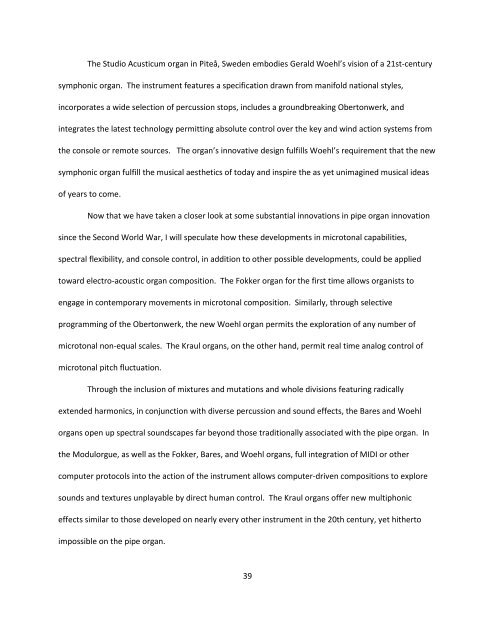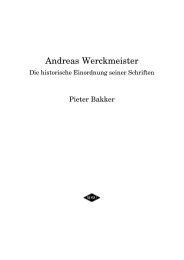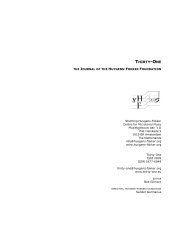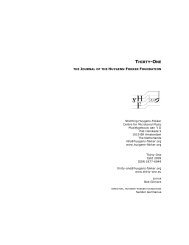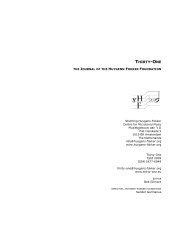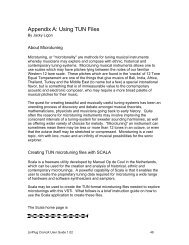Recent Organ Design Innovations and the 21st-century - Stichting ...
Recent Organ Design Innovations and the 21st-century - Stichting ...
Recent Organ Design Innovations and the 21st-century - Stichting ...
You also want an ePaper? Increase the reach of your titles
YUMPU automatically turns print PDFs into web optimized ePapers that Google loves.
The Studio Acusticum organ in Piteå, Sweden embodies Gerald Woehl’s vision of a <strong>21st</strong>-<strong>century</strong><br />
symphonic organ. The instrument features a specification drawn from manifold national styles,<br />
incorporates a wide selection of percussion stops, includes a groundbreaking Obertonwerk, <strong>and</strong><br />
integrates <strong>the</strong> latest technology permitting absolute control over <strong>the</strong> key <strong>and</strong> wind action systems from<br />
<strong>the</strong> console or remote sources. The organ’s innovative design fulfills Woehl’s requirement that <strong>the</strong> new<br />
symphonic organ fulfill <strong>the</strong> musical aes<strong>the</strong>tics of today <strong>and</strong> inspire <strong>the</strong> as yet unimagined musical ideas<br />
of years to come.<br />
Now that we have taken a closer look at some substantial innovations in pipe organ innovation<br />
since <strong>the</strong> Second World War, I will speculate how <strong>the</strong>se developments in microtonal capabilities,<br />
spectral flexibility, <strong>and</strong> console control, in addition to o<strong>the</strong>r possible developments, could be applied<br />
toward electro-acoustic organ composition. The Fokker organ for <strong>the</strong> first time allows organists to<br />
engage in contemporary movements in microtonal composition. Similarly, through selective<br />
programming of <strong>the</strong> Obertonwerk, <strong>the</strong> new Woehl organ permits <strong>the</strong> exploration of any number of<br />
microtonal non-equal scales. The Kraul organs, on <strong>the</strong> o<strong>the</strong>r h<strong>and</strong>, permit real time analog control of<br />
microtonal pitch fluctuation.<br />
Through <strong>the</strong> inclusion of mixtures <strong>and</strong> mutations <strong>and</strong> whole divisions featuring radically<br />
extended harmonics, in conjunction with diverse percussion <strong>and</strong> sound effects, <strong>the</strong> Bares <strong>and</strong> Woehl<br />
organs open up spectral soundscapes far beyond those traditionally associated with <strong>the</strong> pipe organ. In<br />
<strong>the</strong> Modulorgue, as well as <strong>the</strong> Fokker, Bares, <strong>and</strong> Woehl organs, full integration of MIDI or o<strong>the</strong>r<br />
computer protocols into <strong>the</strong> action of <strong>the</strong> instrument allows computer-driven compositions to explore<br />
sounds <strong>and</strong> textures unplayable by direct human control. The Kraul organs offer new multiphonic<br />
effects similar to those developed on nearly every o<strong>the</strong>r instrument in <strong>the</strong> 20th <strong>century</strong>, yet hi<strong>the</strong>rto<br />
impossible on <strong>the</strong> pipe organ.<br />
39


